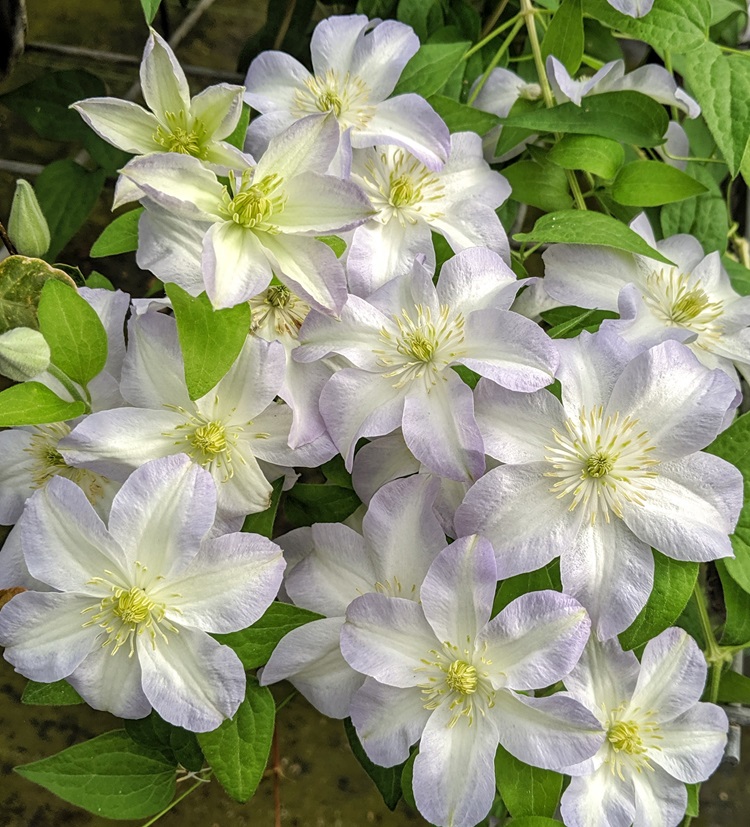Diseases of clematis
Clematis are subject to a number of diseases affecting leaves, stems and roots. The most important causal agents are fungi. Viruses are responsible for some symptoms which can be easily confused with those brought about for other reasons. The only disease caused by bacteria is slime flux.
Follow the links in the left-hand column below for more information:
| Disease | Causal agent(s) |
| Wilt | Phoma clematidina Coniothyrium clematidis-rectae |
| Powdery Mildew | Erysiphe aquilegiae |
| Leaf Spots | Phoma clematidina Coniothyrium clematidis-rectae Alternaria spp. Ascochyta spp. Cercospora spp. Septoria clematidis Glomerella cingulata Phyllosticta clematidis Ramularia clematidis Cylindrosporium clematidis |
| Rust | Puccinia spp. including P. persistens, P. magnesia, P. recondita |
| Botrytis Grey Mould | Botrytis cinerea |
| Slime Flux | Soil-borne bacteria |
| Root Rots | Rhizoctonia solani Phytophthora cinnamomi Phoma clematidina Coniothyrium clematidis-rectae |
| Stunting, Mottling and Yellowing | Viruses including: Tobacco Streak Virus (TSV) Cucumber Mosaic Virus (CMV) Tomato Spotted Wilt Virus (TSWV) |
The information on this and related pages has been provided by Paul Margot.
After a formal training in botany and plant pathology in the UK, Paul spent a period working with ornamental plants at Fison’s Levington Research Station. A subsequent move to the University of Natal in South Africa then took place to investigate the causal agent of root rot of black wattle (acacia mearnsii), a crop grown for tannins used in the leather industry.
Paul then joined a leading international company as plant pathologist and spent the rest of his career with them. This has involved a great deal of international travel working on diseases of temperate, subtropical and tropical crops and has included extended periods living in the UK, South Africa, Japan and Switzerland, where he is now based.
Paul says that he has been playing around with clematis for the last 20 years, his interest being awakened by the gift of a very showy ‘Kathleen Dunford’ that was on display on the BBC stand at the Chelsea Flower Show in 1988. It is only since retiring that things have got more serious – or you might say the disease has got worse. His particular interests are seed and seedling dormancy in clematis and he dabbles in hybridisation – all areas that lead him down unexpected paths.
